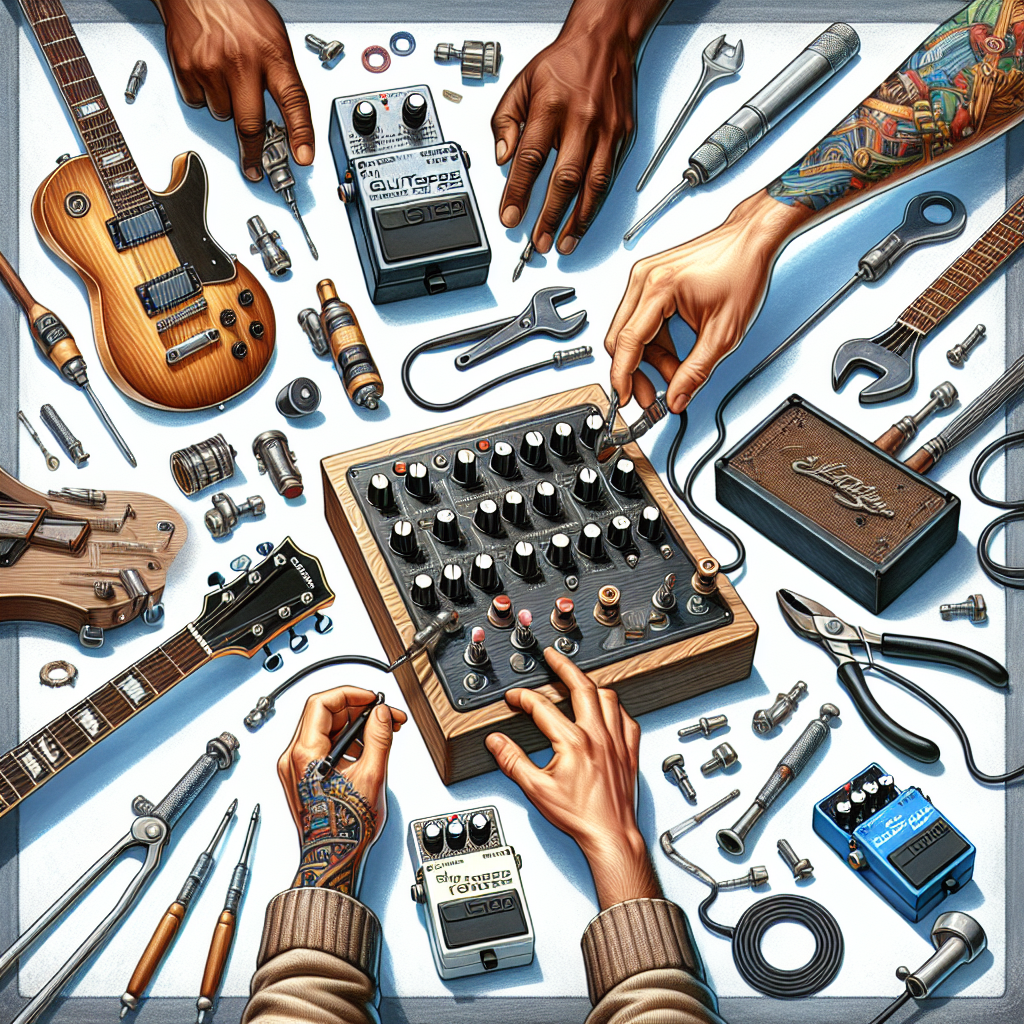
8 Tips for Perfecting Your Fuzz Pedal Tone Settings
Fuzz pedals have been a staple in the world of electric guitar since the 1960s, shaping the sounds of many iconic rock and blues tracks. The raw and gritty tone produced by a fuzz pedal can transform your music, whether you seek a creamy sustain or aggressive distortion. Here, we’ll explore eight key tips to perfect your fuzz pedal tone settings, ensuring your sound is both authentic and unique.
Understanding the Basics of Fuzz Pedals
Fuzz pedals are distortion devices that modify your guitar signal by clipping it to create a square wave, producing a distinctive fuzz tone. Understanding the foundation of how these pedals work is crucial. Fuzz pedals generally have a simple design with controls for volume, tone, and fuzz amount. Adjusting these controls allows you to sculpt your desired sound, whether it’s a smooth, creamy sustain or a heavy, biting distortion.
Knowing Your Gear
Before diving into settings, it’s essential to become familiar with your guitar and amp since they influence the final tone. A single-coil pickup will produce a different response than a humbucker, and a tube amp will interact differently with fuzz than a solid-state amp. Experiment with different gear combinations to find out what works best with your pedal.
Dialing in the Right Fuzz Amount
The “Fuzz” control determines the intensity of the distortion. Set it lower for a subtle boost or cranked higher for an intense, wall-of-sound effect. Start with medium settings and adjust based on your music style or song needs. Remember, too much fuzz can overwhelm your sound, so balance is key.
Tweaking the Tone Controls
The tone knob on a fuzz pedal adjusts the frequency response, allowing you to control brightness or warmth. A brighter setting can help your sound cut through the mix, while a warmer setting can thicken the tone. Start by setting it in the middle, then adjust incrementally to discover your preference.
Volume Control and Unity Gain
The volume knob should be set to match or slightly exceed your bypass signal to maintain consistent levels during performance. This setting is known as “unity gain.” Be mindful, a higher volume setting can push your amp into a desirable overdriven state, adding another layer of complexity to your tone.
Using Fuzz in Combination with Other Pedals
Experiment with placing the fuzz pedal at different points in your effects chain. Many guitarists prefer fuzz pedals first in the chain to interact directly with the guitar signal, while others place them after other gain stages for increased flexibility. Try stacking with overdrive pedals to smooth out the fuzz or using delay and reverb to add depth to your tone.
Tending to Power and Pedal Placement
Ensure your fuzz pedal is properly powered with the correct voltage and polarity for optimal performance. Moreover, pedal placement on your board can impact sound; nearby cables and power supplies can introduce noise, so manage cable routing carefully to maintain a clean signal path.
Listening and Learning
Ultimately, perfecting your fuzz pedal tone settings is a matter of personal taste. Regularly record your playing sessions and listen closely to identify areas of improvement. Study guitarists whose tones you admire to see how they use their gear, and don’t shy away from experimenting—sometimes “happy accidents” create the best tones.
FAQs
Q: What is the difference between fuzz and distortion?
A: While both fuzz and distortion alter the guitar signal, fuzz creates a square wave, resulting in a more compressed and synthetic sound. Distortion offers more harmonically complex clipping, preserving some of the original dynamics.
Q: Can I use a fuzz pedal with a bass guitar?
A: Yes, fuzz pedals work well with bass guitars but require careful settings to retain low-end clarity. Some pedals are specifically designed for bass, offering enhanced low-frequency preservation.
Q: Why does my fuzz pedal sound weak or thin?
A: A weak or thin sound can result from low power supply, mismatched impedance with other pedals, or amp settings. Ensure proper power, check connections, and adjust amp EQ to enhance depth and presence.
Q: Where should I place my fuzz pedal in the effects chain?
A: Fuzz pedals traditionally sound best when placed first in the effects chain. However, experimentation can yield unique sounds, so try different placements to see what complements your style.
Q: How can I reduce noise from my fuzz pedal?
A: To reduce noise, check for proper connections, use quality cables, and shield power supplies. Placing the fuzz at the beginning of the chain can also minimize noise introduction from other effects.
Q: Do batteries affect fuzz pedal tone?
A: Yes, older batteries with lower voltage can provide a sag effect, changing the pedal’s response. Experimenting with batteries versus power supplies can offer tonal variety.
In conclusion, achieving the perfect fuzz pedal tone involves experimentation with settings, understanding how gear interacts, and fine-tuning based on personal preference. Embrace the distinct characteristics of fuzz in your sound, and enjoy the journey of sculpting a tone that’s truly your own. For a deep dive into fuzz pedal history and recommendations, consider this article from Premier Guitar.